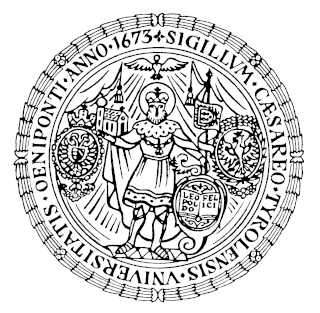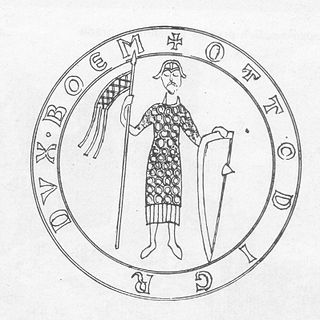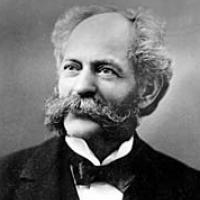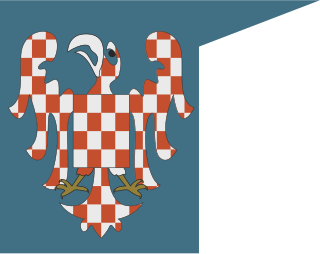
Moravia is a historical region in the east of the Czech Republic and one of three historical Czech lands, with Bohemia and Czech Silesia.

Brno is a city in the South Moravian Region of the Czech Republic. Located at the confluence of the Svitava and Svratka rivers, Brno has about 380,000 inhabitants, making it the second-largest city in the Czech Republic after the capital, Prague, and one of the 100 largest cities of the EU. The Brno metropolitan area has almost 700,000 inhabitants.

The University of Innsbruck is a public research university in Innsbruck, the capital of the Austrian federal state of Tyrol, founded on October 15, 1669.

Brno University of Technology is a university located in Brno, Czech Republic. Being founded in 1899 and initially offering a single course in civil engineering, it grew to become a major technical Czech university with over 18,000 students enrolled at 8 faculties and 2 university institutes.

Palacký University Olomouc is the oldest university in Moravia and the second-oldest in the Czech Republic. It was established in 1573 as a public university led by the Jesuit order in Olomouc, which was at that time the capital of Moravia and the seat of the episcopacy. At first it taught only theology, but soon the fields of philosophy, law and medicine were added.

Otakar Borůvka was a Czech mathematician best known today for his work in graph theory.

Conrad II Otto, a member of Přemyslid dynasty, was the first margrave of Moravia from 1182 to 1189 and duke of Bohemia from 1189 until his death.

Alois Vojtěch Šembera, also Alois Adalbert Sembera or Alois Adalbert Schembera was a Czech linguist, historian of literature, writer, journalist and patriot.
The history of Moravia, one of the Czech lands, is diverse and characterized by many periods of foreign governance.
Karel Slavíček,, was a Jesuit missionary and scientist, the first Czech sinologist and author of the first precise map of Beijing.

Jakub Kresa was a Czech mathematician. He was one of the most important Czech mathematicians of the Baroque era.
Karel Ferdinand Irmler was a Moravian lawyer and the first professor of secular law at University of Olomouc.
Kryštof Josef Hollandt was a Moravian lawyer and professor of law at the University of Olomouc during the years 1695 to 1707, and author of a commentary on the Institutes of Justinian.
Johann Heinrich Bösenselle, Czech: Jindřich Antonín Boesenselle, Latin: Henricus Antonius Bösenselle, was a lawyer, professor of law and Rector of the University of Olomouc.
Josef Vratislav Monse was a Moravian lawyer and historian.

Societas eruditorum incognitorum in terris Austriacis was the first learned society in the lands under control of Austrian Habsburgs. It was established, formally, in 1746 at the university and episcopal town of Olomouc in order to spread Enlightenment ideas. Its monthly journal, "Monatliche Auszüge" was the first scientific journal in the Habsburg Monarchy.

Johann Karl Nestler, Czech: Jan Karel Nestler was an Austrian scientist in the field of hereditary traits, professor of natural history and agriculture at the Philosophical Faculty of University of Olomouc, dean of the faculty and rector of the university, and doyen of the Czech agriculture science.

The Margraviate of Moravia was one of the Lands of the Bohemian Crown within the Holy Roman Empire existing from 1182 to 1918. It was officially administrated by a margrave in cooperation with a provincial diet. It was variously a de facto independent state, and also subject to the Duchy, later the Kingdom of Bohemia. It comprised the historical region called Moravia, which lies within the present-day Czech Republic.

Zdeňka Wiedermannová-Motyčková was a Moravian teacher, journal editor, and women's rights activist. Born into a family of progressive educators, she studied to become a teacher, graduating in 1886. Her Catholic education led her to more conservative values than her family's, but after teaching for several years, she began to recognize the disparities between women and men teachers, as well as those of their students. By 1898, she was publicly calling for equal pay for equal work and campaigning for equal education for boys and girls. In 1902, Wiedermannová founded and became chair of the Moravian Teachers Union, whose focus was to professionalize teaching standards. The following year, she opened a Girls' Academy in Brno, hoping later to include secondary education there. As the Austro-Hungarian Empire provided little funding for girls' education, she held lectures to provide for the operating costs of the academy. Finally in 1908, she successfully established the first girls' secondary school in Moravia.













